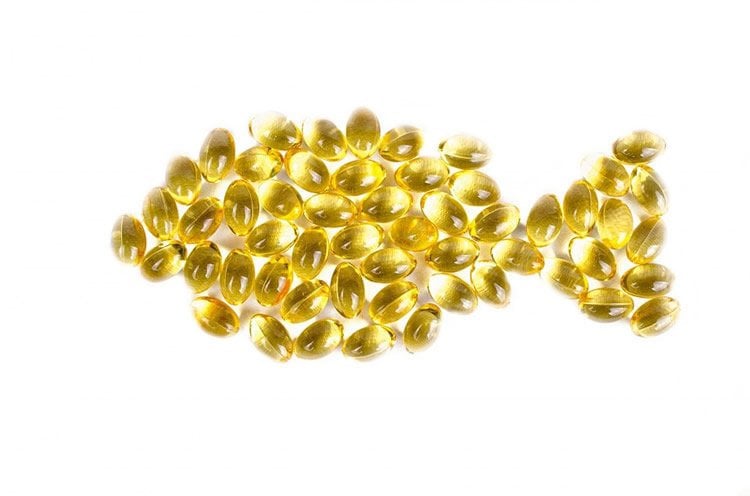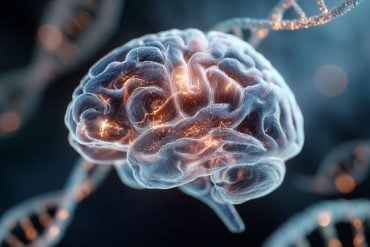Summary: Omega 3 fatty acids and DHA can help photoreceptors and RPEs to survive damage or disease, helping to protect vision.
Source: LSU Health.
A team of LSU Health New Orleans scientists discovered that a component of fish oil not only protects cells critical to vision from potentially lethal initial insults, but also from those that occur in the future. The study showed that the omega-3 fatty acid, DHA, and its derivatives “precondition” photoreceptor and retinal pigment epithelial (RPE) cells to survive. The results are published in the November 2017 online issue of the journal Cellular and Molecular Neurobiology.
“Our findings support the proposed concept that DHA and docosanoids (molecules made in the brain at the onset of injury or disease) are responsible for activating sustained cellular mechanisms that elicit long-term preconditioning protection,” says Nicolas Bazan, MD, PhD, Boyd Professor and Director of LSU Health New Orleans Neuroscience Center of Excellence.
According to the authors, a preconditioning (PC) stimulus is a sub-lethal or pharmacologic stressor that activates a counter-regulatory protective response to a future lethal stimulus. Preconditioning takes place when, for example, the blood supply to an organ is interrupted for a short time and then reestablished. The protective response from that first injury would carry over to a subsequent blood supply shortage, much like the immunity a vaccine confers against future exposures to disease.
“This happens in the heart, brain and retina, as well as other organs,” Dr. Bazan says. “To harness the therapeutic potential of preconditioning, it is very important to identify the molecules directly involved.”

Fish oil contains two types of polyunsaturated fatty acids (PUFAs) — omega-3 (docosahexaenoic acid or DHA) and omega-6 (arachidonic acid or AA). They have distinctly different actions. Omega-3 PUFAs and their enzymatic metabolic derivatives, docosanoids, display potent anti-inflammatory and pro-resolving properties in contrast to the pro-inflammatory actions of omega-6 PUFA derivatives. The researchers found that although they are released concomitantly, DHA can alter the action of AA. When they supplemented DHA prior to the oxidative stress insult, the synthesis of protective DHA derivatives increased while AA synthesis decreased over time.
“Our findings demonstrate that DHA and the induction of docosanoid synthesis is necessary for preconditioning protection, and thus daily survival, of photoreceptor and RPE cells,” adds Bazan. “Since omega-3 impairments are associated with neuroinflammation, which contributes to photoreceptor cell dysfunction and death, enhancing the synthesis of docosanoids may provide an opportunity for halting or ameliorating debilitating retinal degenerative diseases, such as the dry form of age-related macular degeneration,” concludes Bazan.
The LSU Health New Orleans Neuroscience Center research team also included Drs. William Gordon and Bokkyoo Jun, as well as graduate students Khanh Do and Eric Knott.
Funding: This work was supported by National Eye Institute grant EY005121, National Institute of General Medical Sciences GM103340, and the Eye, Ear, Nose and Throat Foundation.
Source: Leslie Capo – LSU Health
Publisher: Organized by NeuroscienceNews.com.
Image Source: NeuroscienceNews.com image is in the public domain.
Original Research: Full open access research for “Retinal Pigment Epithelium and Photoreceptor Preconditioning Protection Requires Docosanoid Signaling” by Eric J. Knott, William C. Gordon, Bokkyoo Jun, Khanh Do, and Nicolas G. Bazan in Cellular and Molecular Neurobiology. Published online November 24 2017 doi:10.1007/2Fs10571-017-0565-2
[cbtabs][cbtab title=”MLA”]LSU Health “Fish Oil Component Preconditions Vision Cells to Survive Future Injury or Disease.” NeuroscienceNews. NeuroscienceNews, 30 November 2017.
<https://neurosciencenews.com/fish-oil-vision-8080/>.[/cbtab][cbtab title=”APA”]LSU Health (2017, November 30). Fish Oil Component Preconditions Vision Cells to Survive Future Injury or Disease. NeuroscienceNews. Retrieved November 30, 2017 from https://neurosciencenews.com/fish-oil-vision-8080/[/cbtab][cbtab title=”Chicago”]LSU Health “Fish Oil Component Preconditions Vision Cells to Survive Future Injury or Disease.” https://neurosciencenews.com/fish-oil-vision-8080/ (accessed November 30, 2017).[/cbtab][/cbtabs]
Abstract
Retinal Pigment Epithelium and Photoreceptor Preconditioning Protection Requires Docosanoid Signaling
Omega-3 and omega-6 polyunsaturated fatty acids (PUFAs) are necessary for functional cell integrity. Preconditioning (PC), as we define it, is an acquired protection or resilience by a cell, tissue, or organ to a lethal stimulus enabled by a previous sublethal stressor or stimulus. In this study, we provide evidence that the omega-3 fatty acid docosahexaenoic acid (DHA) and its derivatives, the docosanoids 17-hydroxy docosahexaenoic acid (17-HDHA) and neuroprotectin D1 (NPD1), facilitate cell survival in both in vitro and in vivo models of retinal PC. We also demonstrate that PC requires the enzyme 15-lipoxygenase-1 (15-LOX-1), which synthesizes 17-HDHA and NPD1, and that this is specific to docosanoid signaling despite the concomitant release of the omega-6 arachidonic acid and eicosanoid synthesis. These findings advocate that DHA and docosanoids are protective enablers of PC in photoreceptor and retinal pigment epithelial cells.
“Retinal Pigment Epithelium and Photoreceptor Preconditioning Protection Requires Docosanoid Signaling” by Eric J. Knott, William C. Gordon, Bokkyoo Jun, Khanh Do, and Nicolas G. Bazan in Cellular and Molecular Neurobiology. Published online November 24 2017 doi:10.1007/2Fs10571-017-0565-2






